
* Mercury proved a less interesting and more challenging target for exploration than Venus. Only three probes have been sent to Mercury, and much still needs to be learned about the planet.
* The planet Mercury is one of the five planets known since ancient times, since it can be seen by eye at various times of the year, low over the horizon before sunrise and after sunset. Its rapid motion through the sky from night to night led the ancient Greeks to name it after the god Mercury, the "fleet-footed" messenger of the gods.
Up to the beginning of the Space Age, little was known about Mercury. As far as any telescope could see, it was a ball of rock with a diameter of 4,878 kilometers, or 38% the diameter of the Earth and 1.4 times the diameter of the Earth's Moon. Mercury's mass, which could be estimated from its orbit around the Sun, was only 5.5% that of the Earth, and its surface gravity was only 38% that of the Earth. It had neither moons of its own, nor any atmosphere to speak of.
Mercury turns out to have an average density of 5.44 grams per cubic centimeter, which is greater than that of any major object in the Solar System except the Earth, which has an average density of 5.52 grams per cubic centimeter. However, Earth's internal density is increased by the compression due to its larger mass; if this compression did not occur, the Earth's average density would 4.4 grams per cubic centimeter, while Mercury's would be 5.3 grams per cubic centimeter. What this implies is that Mercury has a very large iron core relative to its size, about 75% of the planet's diameter and 42% of its volume. In contrast, the Earth's iron core is only 54% of its diameter and 16% of its volume.
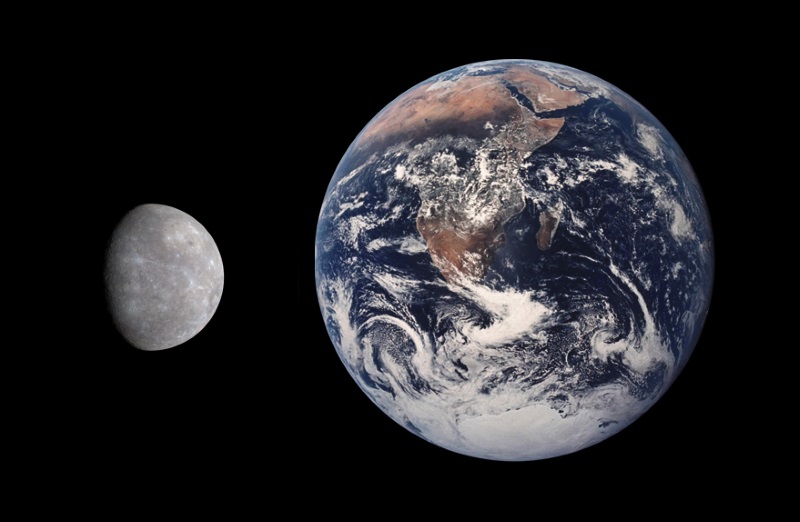
Mercury is the closest planet to the Sun, performing an orbit once every 88 days. Its orbit has an average diameter of 57.9 million kilometers, or 0.39 AU. However, this orbit is unusually eccentric, with an eccentricity of 0.206, and the distance between the Sun and Mercury varies from 0.31 to 0.47 AU. The planet also has an orbital inclination of 7 degrees. The orbit of Mercury is more eccentric and has a higher inclination than the orbit of any other planet.
Mercury's elliptical orbit slowly "precesses" around the Sun at a rate of about 1.56 degrees of arc per century. This puzzled astronomers for a long time, since analysis of its orbit using Newtonian mechanics that took into account all known influences on the planet showed that the rate of precession should be 43 arc-seconds per century slower. One explanation that was proposed was that there was another planet, named "Vulcan", which was even closer to the Sun and very hard to detect. Some observers claimed they spotted Vulcan just after sunset or before sunrise, but the observations were never confirmed.
In 1915, Albert Einstein published his General Theory of Relativity, which can be described as "relativistic" theory of gravity. General Relativity gives different results than Newton's theory of gravity, with the differences between the two theories becoming more significant as the gravitational forces become more extreme, and a new analysis of Mercury's orbit using General Relativity was able to account for the observed precession of the planet.
* Telescopic observations of Mercury are difficult, since Mercury never moves farther away from the Sun in the Earth's sky than 27 degrees. This means observations always have to be made at low inclination, with the image passed through an extended thickness of atmosphere that distorts it badly.
Astronomers had concluded from their observations that Mercury was "tidally locked" to the Sun, meaning the length of its day was exactly the same as the length of its year, or 88 Earth days, and it always kept one side facing towards the Sun, to be eternally seared, and the other side facing away from the Sun, to be eternally frozen. This made for an exotic environment for science-fiction novels, but it turned out to be a half-truth -- or more precisely, a two-thirds truth.
In 1962, radio astronomers measured the thermal radiation emitted by Mercury's "dark side" and concluded that it was too warm to be "eternally frozen in darkness". In 1965, Gordon Pettengill and Rolf Dyce, then of Cornell University, bounced ultra-long-range radar signals off of Mercury, using the Arecibo radio telescope. They discovered that Mercury actually rotates once in a little under 59 Earth days. More precise radar observations performed in the early 1970s pinned down the rotation rate to 58.646 days.
The significance of this value is that Mercury rotates three times for every two orbits around the Sun. This means that, instead of being "tidally locked", it is in a "tidal resonance" with the Sun. To get out of that orbital state would require adding energy, say by a collision with a large asteroid, and so it is trapped in this 3:2 resonance, even though a 1:1 lock would be a lower energy state. It's somewhat analogous to a stone that has rolled into a valley but ended up being trapped on a ledge, and it won't roll to the bottom unless something knocks it off the ledge.
It's not surprising that astronomers thought that Mercury was in a 1:1 lock, since if they made observations on every other orbit they would see the planet in the same orbital position, and displaying the same features. Images of the planet were poor to begin with, and so discrepancies could be chalked up to mistaken observations. It appears that the mistaken idea that Mercury was tidally locked to the Sun was established in the 1880s by the Italian astronomer Giovanni Schiaparelli.
Mercury's rotation rate means that a sunrise-to-sunrise "day", as opposed to the "sidereal" day relative to the stars, lasts two years, or 176 Earth days. The eccentric orbit also has the interesting effect that at perihelion -- the closest approach to the Sun when the planet's orbital velocity is the highest -- the motion of the Sun across Mercury's sky due to the planet's rotation is more than balanced by the motion of the Sun due to the planet's orbital velocity. This means that, depending on the vantage point, there will be a double sunrise; a double sunset; or the Sun will backtrack across the sky.
BACK_TO_TOP* That was all that was known about Mercury until the 1970s. However, in 1973, NASA launched the Mariner 10 probe to perform three flybys of Mercury. Mariner 10 weighed 503 kilograms. Like other Mariner spacecraft sent to Venus and Mars, it was built around an octagonal bus. Unlike Mariners sent to Mars, it used two solar panels, not four, since there was plenty of sunlight where Mariner 10 was going. Spacecraft systems were protected by thermal insulation and a sunshade. The payload suite included:
Data was also obtained with a "radio science" experiment that involved careful monitoring of changes in the probe's radio communications beam.
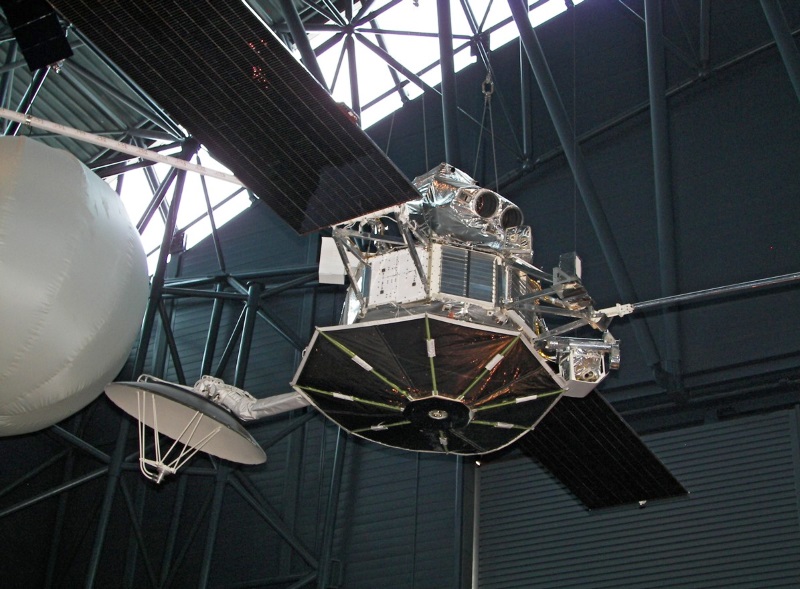
The probe was launched by an Atlas-Centaur booster on 3 November 1972, to be placed into a retrograde orbit around the Sun, opposite of that of the orbits of the planets. The probe flew past Venus on 5 February 1974, using the encounter to adjust its orbit toward Mercury. This made it the first planetary probe to use a gravity assist trajectory; as mentioned earlier, it performed measurements of Venus as it flew past. Mariner 10 then performed three flybys of Mercury:
The dynamics of the probe's orbit meant that all three flybys were over the same side of the planet. Mariner 10 returned 2,700 images, photographing 45% of Mercury's terrain at a resolution of 1.5 kilometer per pixel. A small fraction of the terrain, less than 1%, was imaged at higher resolutions ranging from 100 to 500 meters. The detail and extent of the map obtained by the Mariner probe was comparable to that of maps made of the Moon before the Space Age.
No other detailed images were obtained of the planet for the rest of the 20th century. Given the limited resolution of Mariner 10's images and the fact that less than half of Mercury was imaged, much remained to be learned about the planet.
* Most of Mariner 10's images of Mercury presented a world that looks very much like the Earth's Moon. Both worlds have heavily cratered upland regions, and large and relatively smooth plains that surround and fill impact basins.
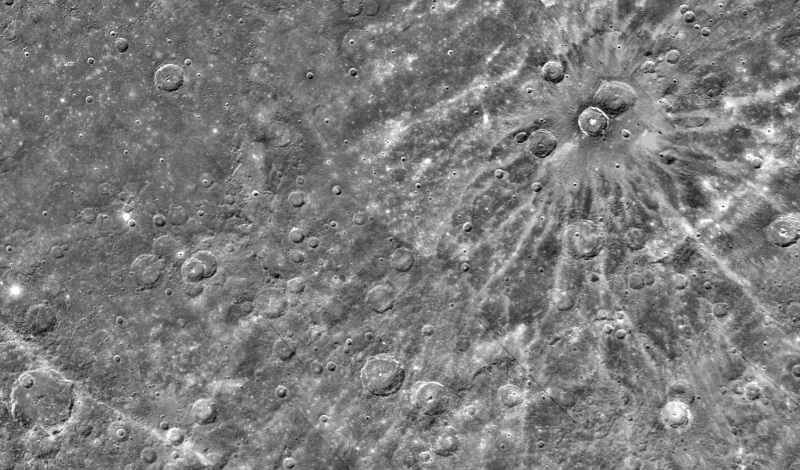
Mariner 10 also performed infrared measurements of Mercury that showed its "soil" is a good thermal insulator. Although the surface temperature varies between about 100 to 700 degrees Kelvin, at a meter below the surface the temperature is a constant 350 degrees Kelvin. This is consistent with a surface covered with powdered rock, much like the lunar "regolith", created by endless impacts from space.
However, Mercury differs from the Moon in many ways. Mercury's cratered regions are separated by widespread rolling plains, and in fact the plains are the planet's dominant surface features. Mercury also seems to be crisscrossed by a network of "thrust faults" or "lobate scarfs" known as the "Mercurian Grid", caused by the planet's shrinkage as it cooled; no such network is seen on the Moon. Another difference is that Mercury is significantly more reflective than the Moon. This implies a different surface composition, with much less iron and titanium than the Moon, which seems odd given the planet's large metal core.
The most prominent feature observed by Mariner 10 was an impact crater 1,300 kilometers in diameter named the "Caloris Basin". It is filled and surrounded by smooth plains that resemble the flat lunar regions known as "maria", but it differs from the maria in that it has a closely-spaced network of ridges and fractures arranged in both concentric and radial patterns, apparently caused by the lowering of the floor of the basin in the impact, and then the raising of the floor due to its rebound.
The Caloris Basin was on the edge of the planet's disk observed by Mariner 10, and so the region opposite to it on the other side of the planet was visible as well. This "antipode" area is covered with a pattern of hills and valleys, apparently created when the seismic shock waves of the impact met up in a focus. Studies of the density of cratering in the Caloris Basin suggest that the impact that formed it occurred about 3.6 billion years ago. Coarse radar observations of Mercury made after the Mariner 10 mission hint that the unseen half of the planet is similar, with cratered terrain and lobate scarfs.
One of Mariner 10's most significant discoveries was that Mercury does have a magnetic field, like Earth's but much weaker, though still strong enough to deflect the Solar wind. This implied that the outer layers of the iron core are still molten -- which is puzzling, since such a small planet cannot retain heat very well, and a purely metal core should have solidified completely long ago. Calculations showed that a concentration of 7% sulfur would be adequate to lower the melting point enough to keep the upper layers of the core liquid, and eventually radar observations of variations in Mercury's rotation rate demonstrated that the planet in fact had a molten core.
Mariner 10 did detect a trace atmosphere around Mercury, a trillion times thinner than the Earth's atmosphere. Mercury's atmosphere contains hydrogen, helium, and oxygen, all apparently derived from the solar wind. Later Earth-based measurements also identified small proportions of sodium and potassium -- elements that were not detectable by Mariner 10's ultraviolet spectrometer, since it could not pick up their spectral lines. The sodium and potassium appear to be derived from Mercury's surface, kicked up by micrometeorite impacts or solar-wind sputtering of the surface.
BACK_TO_TOP* In the 1990s, researchers at the California Institute of Technology performed radar observations of Mercury that hinted at the existence of water ice at the poles. Mercury's spin axis is almost perfectly perpendicular to the plane of its orbit, and this means that volatiles could be trapped in shadowed areas near the poles. Such observations and a revival of planetary science missions in the 1990s led to two new Mercury missions, the NASA "Mercury Surface, Space Environment, Geochemistry, & Ranging (MESSENGER)" mission and the ESA "BepiColombo" mission.
After a few years of delays, MESSENGER was launched by a Delta II 7925H booster from Cape Canaveral on 3 August 2004. The delayed launch led to a less optimum launch window and stretch-out of almost two years in the transit time to Mercury. The probe had to perform a complicated series of flybys to reach the planet:
Following the third flyby, in March 2011 the probe was to be finally placed into a highly elliptical orbit, ranging from a maximum of 15,000 kilometers to a minimum of 200 kilometers, with an orbital inclination of 80 degrees from the planet's equator. The lengthy flight and six gravity assists were required because inserting a probe into Mercury orbit is a difficult problem in orbital mechanics. The probe carried an unusually high proportion of propellant, 55% of launch mass, to allow it to perform the proper course adjustments.
MESSENGER was built by the Johns Hopkins University's Applied Physics Laboratory in Maryland, which also conducted operational management of the mission. The probe had a launch mass of about 600 kilograms and was built around a graphite-epoxy composite bus, with titanium fuel tanks. It was protected by a sunshade with dimensions of 2.4 x 1.8 meters, composed of layers of Kapton plastic insulation wrapped in Nextel ceramic cloth, as well as heat pipes and radiators to dump heat off the "dark side" of the spacecraft. The solar arrays were covered with a mirror surface that reflected two-thirds of the sunlight to reduce heating.
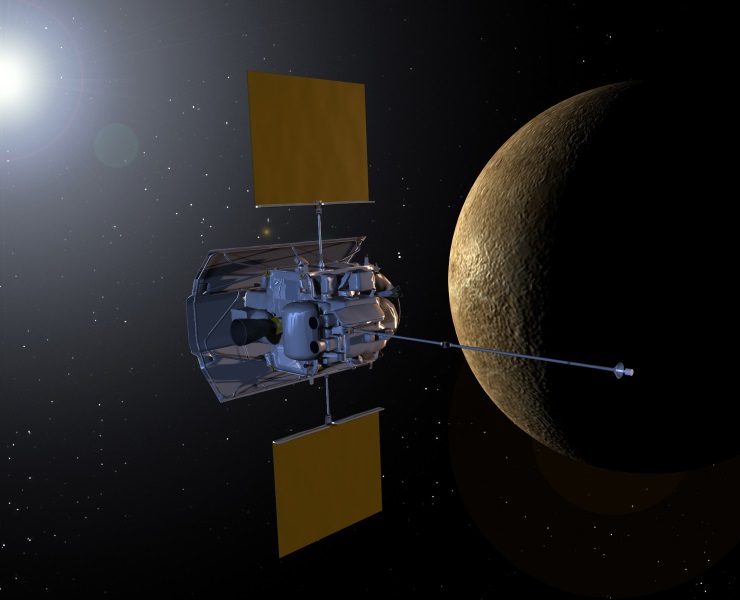
All the instruments were located on a "science deck"; most of the instruments were on fixed mounts, meaning that they had to be pointed by adjusting the orientation of the spacecraft. The instrument suite weighed a total of only 50 kilograms and included:
The probe's communications system was also used for radio science experiments, with subtle shifts in the signal being used to map out Mercury's mass distribution. The communications system was an innovation, including two electronically-steered "phased array" antennas, the first time such a technology was used on a planetary probe. Data was stored in twin 1-gigabit solid-state data recorders.
The primary orbital mission lasted twelve Earth months, equivalent to four Mercurian years, six Mercurian sidereal days, or two Mercurian solar days. It was followed by another year of extended operations. Mission scientists took the probe down to low orbital altitude at the end of the mission, with the spacecraft impacting the surface of Mercury on 30 April 2015.
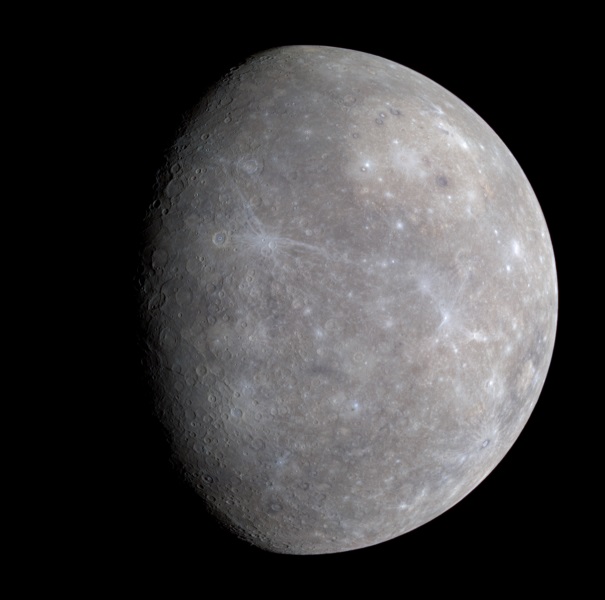
The final measurements performed by MESSENGER shed light on a long-standing puzzle: why is Mercury's surface so dark, relatively to other airless, stony bodies of the Solar System? It turns out the planet's surface is enriched in graphite, with carbon levels of a few percent, a much higher ratio than found on the Earth's Moon. The suspicion is that the graphite comes from Mercury's original crust 4.5 billion years ago, when the planet was solidifying from a ball of molten magma. While most minerals crystallizing out of the magma ocean would have sunk, graphite would have floated to the top.
* Mercury was visited again less than a decade later. The ESA BepiColombo project was approved in 2000 as a "Cornerstone" mission for the agency's "Horizon 2000 Plus" program. BepiColombo was ended up consisting of a pair of orbiters -- including the "Mercury Planetary Orbiter (MPO)", provided by the ESA, and the "Mercury Magnetospheric Orbiter (MMO)", provided by Japan's JAXA space agency as a minority partner. A small lander, the "Mercury Surface Element", was cut early in the program. The ESA provided the launch, with an Ariane 5 putting the two probes into space on 20 October 2018.
The two probes launched as a unit, being carried by a "Mercury Transit Module (MTM)" using a solar electric Hall-effect xenon-ion propulsion system for interplanetary cruise. Launch mass of the cruise element was 4,100 kilograms. The MPO had a launch mass of 1,230 kilograms; its payload included:
The MPO's communications system also supported radio science experiments. The MMO had a launch mass of 255 kilograms; its payload included:
After launch, BepiColumbo performed an Earth flyby in July 2018; then two flybys of Venus, one in September 2019 and one in May 2020; followed by five Mercury flybys between 2020 and 2023, before finally arriving in orbit on 5 December 2024. The MTM will be discarded on entry into Mercury orbit and deployment of the two orbiters.
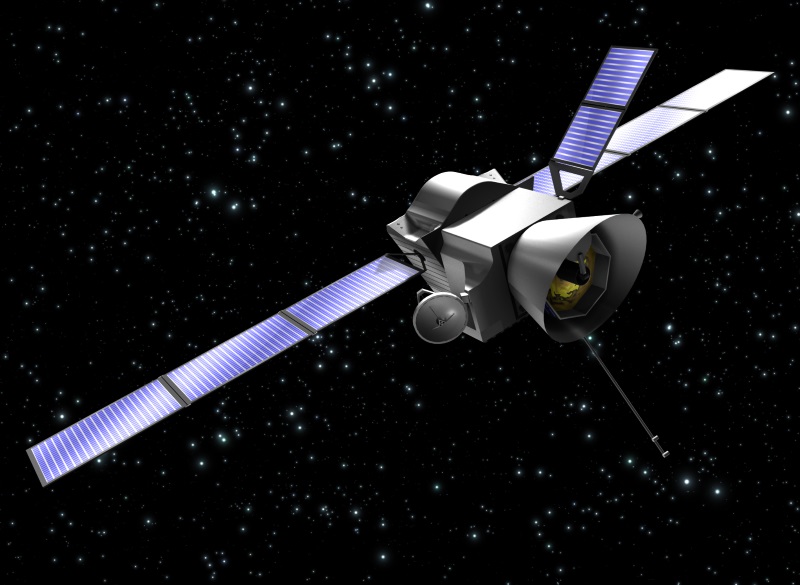
The mission was named after Giuseppi "Bepi" Colombo of the University of Padua in Italy, who had designed the flyby trajectory that took Mariner 10 to Mercury, and made other significant contributions to space technology, including studies of "space tethers".
BACK_TO_TOP* Illustrations details:
* From 2000 to 2002, I wrote a series of documents on planetary exploration, and then consolidated them in 2002 into a unified document, THE EXPLORATION OF THE PLANETS. It turned out to be too big and hard to maintain, so from 2021 I broke in down into components again.
* Revision history:
v3.0.0 / 01 aug 22 / Update of stand-alone document. v3.0.1 / 01 may 24 / Review & polish.BACK_TO_TOP
